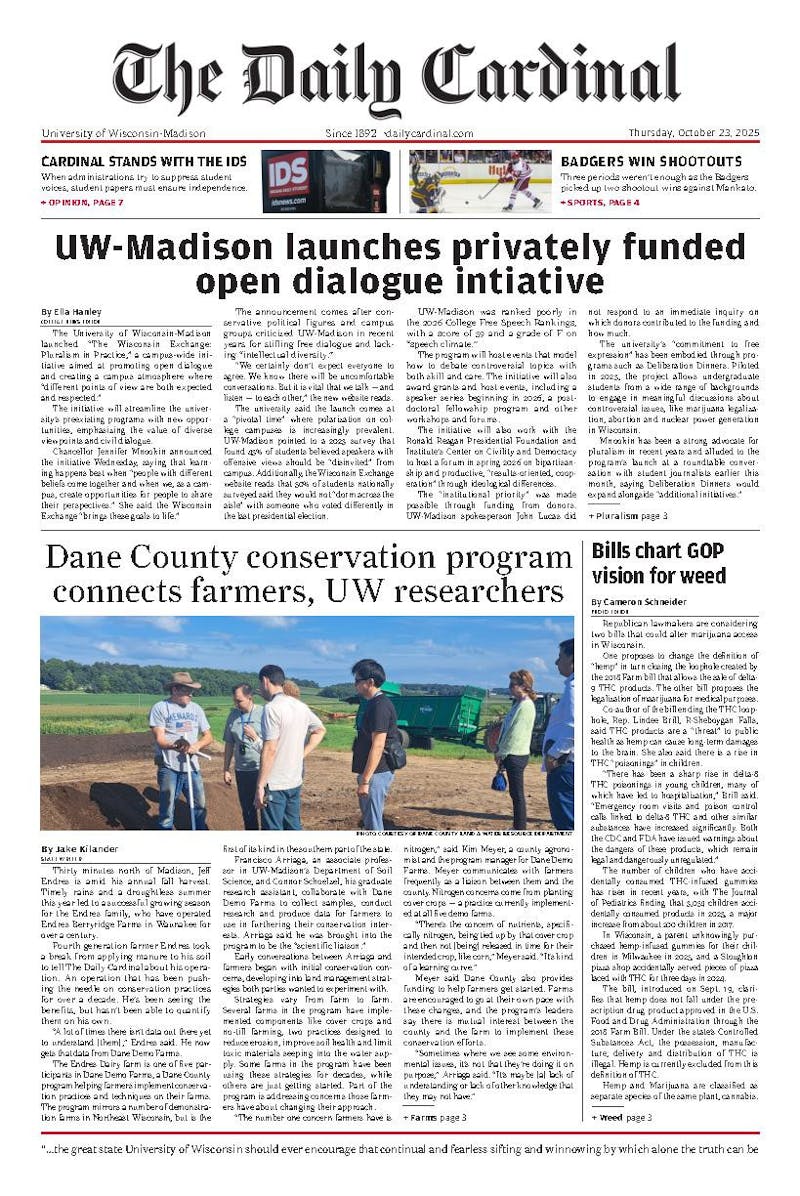Speaking over the sound of powwow drums, UW-Madison pharmacy student Kym Ludwig compared the sugar contents in different energy drinks and helped administer free diabetes risk tests to Wunk Sheek Spring Powwow guests at an informational booth tucked between indigenous food vendors and stalls selling beaded jewelry.
Ludwig, who is also a member of the Native American Center for Health Professions, or NACHP, said she hoped Saturday’s powwow would be an opportunity to start conversations with members of her community about diabetes — a disease which disproportionately affects Native people — as well as health care in general.
The powwow, which is in its 49th year, has historically drawn thousands of students, Madison community members and Native Americans from around the state, but this is the first time NACHP has partnered with the School of Pharmacy there.
“It’s good to raise awareness about Type Two diabetes,” Ludwig said. “Maybe these people haven't gotten a lot of testing done. By going into the community and getting the word out there, we create more access for more people.”
In Wisconsin, Native communities have long faced health care inequities. Some of those problems are related to broader issues of rural health care accessibility, but some are specific to the colonial traumas Native populations continue to grapple with.
Social factors like poverty, educational access, and economic opportunity are deeply connected to overall health, according to a recent study. With the poverty rate for Native Americans almost double the national average, they are labeled a high risk group for both heart disease and diabetes.
“There is definitely an access gap,” Ludwig said. “Not everyone has a primary health care provider, and we know that there is lower rates of getting insured as minority individuals.”
But she said that the first step to making changes in Native health outlooks is providing information to the public and starting conversations about healthcare.
“We might push people over the edge and get them thinking about finding some kind of care if they were unsure about getting insured, or didn’t know what their options were,” Ludwig said. “We want to empower people and connect them to places where they can reach out for health care.”
Beyond providing Native communities at the powwow with information, Ludwig said that a NACHP aims to advocate for better Native representation in the healthcare field by being present at events like the Spring Powwow.
“It’s especially good to have outreach events like this so that Native Americans can see that there are other Native Americans in the health care profession that are in school right now,” Ludwig said. “There is need for other Native Americans that plan to be working in communities with Native American populations specifically.”
In 2015, Native Americans and Alaskan Natives made up 0.3 percent of the nation’s enrolled medical students, second-lowest only to students of Native Hawaiian and Pacific Islander descent, according to data compiled by the Association of American Medical Colleges.
By contrast, white students made up the highest rate of total enrollments at 51 percent, followed by Asian students at 20 percent.
Diversifying the medical field could have measurable impacts on health care outcomes for minority communities, according to Linda Scott, dean of the UW-Madison School of Nursing, in a talk in February.
For Native Americans, Ludwig explained that expanding access to other Native healthcare professionals might be one way to improve the quality of the health care they recieve. Healthcare professionals who understand the cultural nuances of the communities they serve may deliver better outcomes and provide better experiences for their patients.
“One reason I feel strongly about that personally is that Native populations might feel more secure and willing to open up about their health if they feel connected to their healthcare provider,” Ludwig said. “That’s one of the reasons it’s so important to do community outreach like this.”
When Ludwig entered the pharmacy school, she was the only Native student enrolled. Now, she said she hopes she can help pave the way for other students, and also work to facilitate more collaborations like this one between NACHP, the School of Pharmacy and the broader Native community.
Andy Goldstein contributed to this report.






